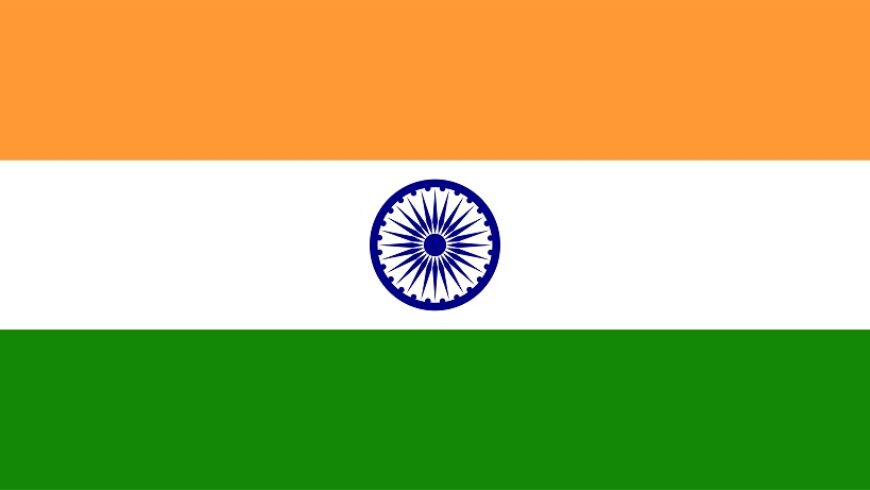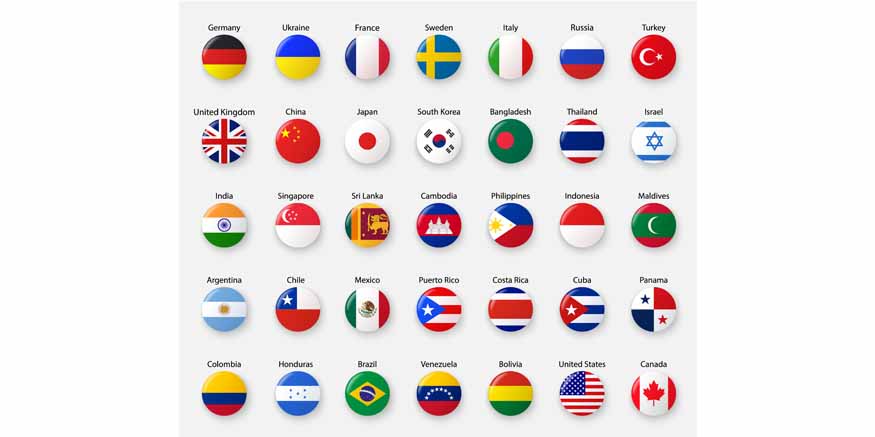National symbols are the pride of the country. These symbols represent a country around the globe showcasing its ethos, culture and tradition. As such India has 17 national symbols that signify the country’s values.
List of National Symbols of India
National Symbols of India | ||
S. No. | Title | National Symbols |
1 | National Flag | Tiranga |
2 | National Anthem | Jana Gana Mana |
3 | National Calendar | Saka calendar |
4 | National Song | Vande Mataram |
5 | National Emblem | National Emblem of India |
6 | National Fruit | Mango |
7 | National River | Ganga |
8 | National Animal | Royal Bengal Tiger |
9 | National Tree | Indian Banyan |
10 | National Aquatic Animal | Ganges River Dolphin |
11 | National Bird | Indian Peacock |
12 | National Currency | Indian Rupee |
13 | National Reptile | King Cobra |
14 | National Heritage Animal | Indian Elephant |
15 | National Flower | Lotus |
16 | National Vegetable | Pumpkin |
17 | Oath of Allegiance | National Pledge |
- National Flag – Tiranga
The word ‘Tiranga’ in Hindi means tri-colour. The Indian National Flag consists of 3 main colours. The top band is Saffron, symbolising strength and courage. The middle band is white, representing peace and truth with chakra in the middle. The bottom band is green, signifying fertility, growth, and auspiciousness of the land.
The 24 spokes of the Ashoka Chakra are often seen as symbolising the 24 hours of the day, indicating that the nation should progress continuously. A chakra is also a symbol of unity and harmony.
- National Anthem – Jana Gana Mana
“Jana-Gana-Mana” has five stanzas, written by famous Indian Nobel prize winner, Rabindranath Tagore. This was first sung on December 27, 1911, in Calcutta.
The Indian National Anthem highlights the diverse geography and linguistic diversity of the country while paying a tribute to the motherland.
- National Calendar – Saka Calendar
Indian Calendar, also known as Saka Calendar, starts with Chaithra as its first month and ends with Phalguna. Every month is referred to as Māsa. The Saka Calendar generally starts in the month of March and ends in the month of February of next year in terms of the Gregorian calendar.
- National Song – Vande mataram
“Vande Mataram” was penned by Bankim Chandra Chatterjee in his Bengali book “Anand Math.” This patriotic song was officially chosen by the Constituent Assembly of India in 1950. It became a beloved anthem for the freedom fighters of that time, filled with love and respect for their country.
- National Emblem – The Lion Capital of Sarnath
The State Emblem is based on the Lion Capital of Ashoka at Sarnath. It shows four lions on the abacus with a Dharma Chakra in the middle, a bull on the right, and a galloping horse on the left. This design became the State Emblem of India on January 26, 1950.
The motto Satyameva Jayate, which means ‘Truth Alone Triumphs’, is written in Devanagari script.
- National Fruit – Mango
The King of Fruits, Mango, is the National fruit of India. It represents prosperity, abundance, and wealth in the country’s image.
- National River – Ganga
The Ganga River, also known as the Ganges River, was named the National River of India on November 4, 2008, by then Indian Prime Minister Manmohan Singh. Ganga is considered the most sacred river in India, symbolising purity and spirituality.
To help with the Ganga Action Plan (GAP), the Indian Prime Minister declared Ganga as the National River in 2008. The GAP’s objective was to regulate the pollution of the most important river.
- National Animal – Royal Bengal Tiger
Tiger, Panthera tigris, is a striped wild carnivorous creature. It has thick yellow fur with dark stripes. The Royal Bengal Tiger is the national animal of India because of its grace, strength, agility, and enormous power.
Fun Fact
Lion was the National Animal of India till the year 1973.
Bengal Tiger was replaced with Asiatic Lion because Tiger was known worldwide and spread across sixteen states in the nation.
On the other hand the Lion was only present in Gir within Gujarat.
- National Tree – Banyan
The banyan tree was chosen as the National Tree of India because of its majestic appearance, long-lasting life, and spiritual importance in India. It provided a cool shelter for many exhausted people seeking relief from the hot sun.
This tree is surrounded by numerous stories and beliefs that have been cherished by Indians for a long time. It plays a significant role in certain Hindu ceremonies and is a home for different creatures.
Fun fact
Aalamaram is another term used for the Banyan Tree.
- National Aquatic Animal – Ganges River Dolphin
The Ganges River Dolphin, also known as ‘Susu,’ is the official National Aquatic Animal of India. The main reason for naming the Ganges River Dolphin as the National Aquatic Animal of India was to protect it from becoming extinct. This decision was announced in 2009.
- National Bird – Peafowl
The Indian peafowl, Pavo Cristatus, is the National Bird of India. It is a big, colourful bird with a fan-shaped crest of feathers, a white patch under its eye, and a long, thin neck.
In 1963, it was chosen as the National Bird of India because it represents our country’s wildlife and has a special place in Indian culture due to its religious and legendary importance. Male are referred as Peacocks and female are called Peahens
- National Currency – Indian Rupee
The symbol for the Indian rupee, ₹, was created by D. Udaya Kumar and officially introduced by the Government of India on July 15, 2010.
- National Reptile – Indian Cobra
The Indian King Cobra, also known as Ophiophagus hannah or Snake Eater, holds a special place in Indian culture, religion, and philosophy.
- National Heritage Animal – Indian Elephant
Elephants have been declared as national heritage animals by the government in 2010, with an aim to step up measures for their protection.
- National Flower – Lotus
The ‘Lotus’ or water lily, is the National flower of India. The lotus represents long life, respect, luck, and triumph. It can thrive in shallow water and muddy swamps, and can come back to life for thousands of years, symbolising resilience and the purity of the soul, mind, and spirit in any situation.
- National Vegetable – Pumpkin
The Indian pumpkin, also known as ‘kaddu’, is considered the national vegetable of India. It grows in various regions across the country This vegetable does not require top-notch soil conditions, and can spread as a climber or creeper.
- Oath of Allegiance – National Pledge
The Indian National Pledge was written by Pydimarri Venkata Subba Rao in 1962.
The Pledge
India is my country and all Indians are my brothers and sisters.
I love my country and I am proud of its rich and varied heritage.
I shall always strive to be worthy of it.
I shall give my parents, teachers and all elders respect and treat everyone with courtesy.
To my country and my people, I pledge my devotion. In their well-being and prosperity alone lies my happiness.”
Conclusion
Our national symbols are more than just pictures. They show what the country stands for – its beliefs, differences, and togetherness. These symbols help us remember India’s exciting past, diverse traditions, and dedication to fairness, freedom, equality, and brotherhood. At Mother’s Pet Kindergarten, children are taught about various such aspects of national importance in order to instill national and cultural identity in them.













Recent Comments